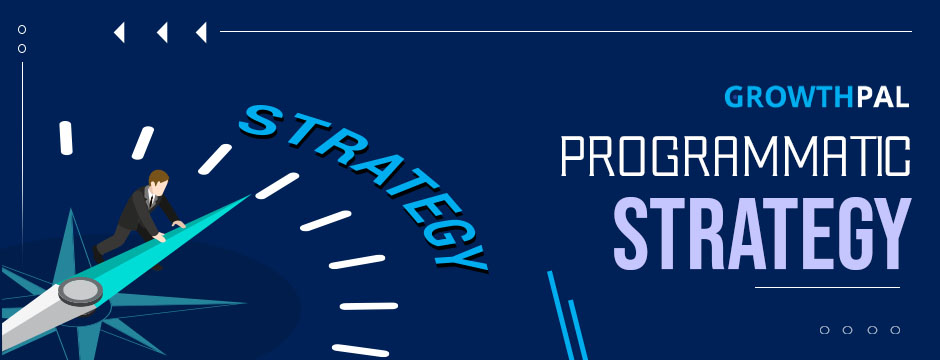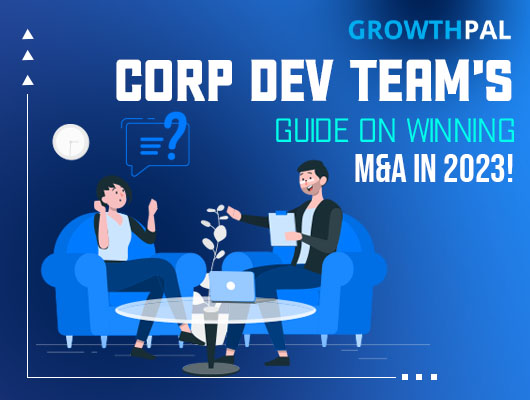Corp Dev team's guide on winning M&A in 2023!
Conquering the corporate development arena is no small feat. Navigating through a sea of potential pitfalls and challenges, from finding the perfect target to overcoming cultural roadblocks,everything feels to be overwhelming. Additionally, with rising M&A activity in recent years, corporate development practices have evolved. In 2023, corpdev teams are taking a smarter route to every process of M&A, whether it’s sourcing a qualified M&A pipeline or negotiating a deal. They are not only leveraging technology and data intelligence but also digging deep into M&A processes and transforming them too!
In 2022, BCG reported that M&A activity has hit the pre-pandemic level; despite slowing down, relative to 2021. This is due to the fact that inorganic growth investment amongst the technology based businesses has increased. Investors and buyers are betting on the growth of new age businesses and acquiring flourishing startups and mid size companies rather than the traditional approach of big ticket deals. But with change in such practices, M&A leaders must also change in the approach with which they operate M&A workflow in terms of process management, technology, deal negotiation and many more.
Realizing this necessity, we researched across the universe and found 5 major trends that have ruled M&A market in 2022 and will sustain through 2023.
1. Programmatic Strategy!


McKinsey, in its quarterly report of 2021 vouched for strategy as the prime differentiator in M&A success. It quotes, “Our empirical research, which analyzes more than 20 years of data, confirms, once again, that programmatic M&A is the strategy that is most likely to create the most value for companies. That is, carefully choreographing a series of deals around a specific business case or M&A theme—rather than relying on episodic “big bang” transactions—is far more likely than other approaches to lead to stronger performance and less risk.”
With this strategic approach to programmatic M&A, functional leaders are focusing more on small but multiple acquisitions with a theme based strategy that aligns with corporate objectives and yields additional value to business.
Additionally, McKinsey also found that early adoption of this strategy delivered 2 percent more in excess total returns to shareholders (TRS) annually as compared with their peers. By contrast, none of the other approaches to M&A (organic, selective, big deal) created any excess TRS, on average, for the cohort of companies.
2. Data as a leverage
In a recent survey of 100 deal makers, it is revealed that corpdev units have started using data and intelligence as a leverage to make informed decisions, giving them an edge over their competitors. Also, it mentioned, “77% companies use data service providers for deal sourcing and 73% feel their deals fail due to lack of accurate data.”
This trend has been on rise across the M&A ecosystem. Especially in deal sourcing, companies are benefiting tremendously from data driven intelligence on potential targets. Not only are they able to reduce time in building a qualified M&A pipeline but are able to locate companies that are outside their network which can add even higher value.
However, data on companies that is found readily online, has limitations too!
- Data quality: The accuracy and completeness of data can be a challenge, especially in the due diligence process.
- Data interpretation: The way data is analyzed and interpreted can affect its usefulness, leading to potential biases or incorrect conclusions.
- Data privacy: Data privacy laws can limit the access and use of sensitive information in the due diligence process.
- Data bias: The selection and sourcing of data can be influenced by biases, leading to a distorted understanding of the target company.
- Data incompleteness: In some cases, critical data may not be available or accessible, affecting the decision-making process.
It’s important for corporate development teams to be aware of these limitations and take steps to minimize their impact. This includes using multiple sources of data, conducting thorough due diligence, and engaging experts to assist with data interpretation and analysis.
3. IB intelligence: your winning streak starts here!
Success in M&A is when corpdev leaders are able to source deals at lightning speed and close deals faster. But at the same time, also keep an increased pace at their deal velocity. To meet this objective, functional leaders look at the possibility of accessing business intelligence and making informed decisions rather than depending on unverified data sources.
By constructing trends in revenue growth, examining profit margins, and identifying exceptional profit and loss cases for the target companies compared to industry trends over recent years, the validity of the data can be determined. These visualizations assist in highlighting details that may be easily overlooked among rows of numbers and can reveal instances of falsified financial reports. The financial and operational situation of the company can be assessed, and the quality of its earnings can be measured, based on its financial reports.
4. Acquiring Culture Fit Targets create additional value in less time
Culture fit targeting is a crucial aspect of corporate development success. It refers to the alignment of an individual’s values and beliefs with the company’s culture. When hiring or acquiring companies, focusing on culture fit can have significant benefits. This includes improved employee morale and retention, increased productivity, better decision-making, stronger brand reputation, and smoother acquisition integration.
A positive company culture can also contribute to job satisfaction, reducing turnover and attracting top talent. Aligned employees are more likely to work well together and make better decisions, leading to improved teamwork and productivity. By focusing on culture fit, companies can ensure a smoother and more successful integration process, ultimately contributing to their overall success.
5. Rise of Fractional and End-to-end Deal Sourcing
Moving ahead of technology, corpdev leaders have started using Fractional Corpdev Services. Such services have an amalgamation of technology, intelligence and strategy, all in one place.
Starting from sourcing quality targets to conducting buy side and sell side introductions and further providing additional stakeholder management (including third party due diligence and transaction support), a fractional corpdev service acts like a power plug to a corpdev team. Working as a partial corpdev muscle, these services help M&A heads decrease burnouts of their team while receiving an output of a level of PE firm but at minimal fees. These services have been rising in popularity and pose multiple benefits.
- Improved speed and efficiency: By taking a more hands-on approach, companies can move more quickly through the M&A process, reducing the time it takes to identify, evaluate, and close a deal.
- Increased control and flexibility: With end-to-end deal sourcing, companies have greater control over the M&A process, and can adapt their approach as needed to respond to changing market conditions.
- Lower efforts: By reducing the need for external advisors and service providers, end-to-end deal sourcing can help companies lower the cost of their M&A deal sourcing efforts.
- Improved quality of deals: With a more comprehensive and integrated approach, companies are better positioned to make informed and strategic decisions, leading to higher-quality deals that deliver greater value to the business.
In conclusion, fractional and end-to-end deal sourcing is on the rise as companies seek to improve their efficiency and effectiveness in M&A. By taking a more hands-on approach, companies can achieve better results and improve the chances of a successful M&A outcome.
Wrapping Up
In conclusion, the corporate development landscape is constantly evolving and adapting to new challenges and opportunities. By staying informed of the latest trends and best practices, M&A professionals can position themselves for success in an ever-changing market.
From data-driven decision making to strategic investments, these 5 trends are shaping the future of corporate development and providing a roadmap for those looking to stay ahead of the curve. Embrace the change and stay ahead of the pack with a forward-thinking and dynamic approach to M&A.
If you are looking to enhance your dealmaking and ace your inorganic growth strategy, Growthpal can help you with end-to-end deal sourcing services.
We specialize in building a qualified M&A pipeline which is curated and personalized by our team of 50+ analysts and further we also support complete stakeholder management, enabling you with end-to-end transaction support as required.
To connect with us, click here.









